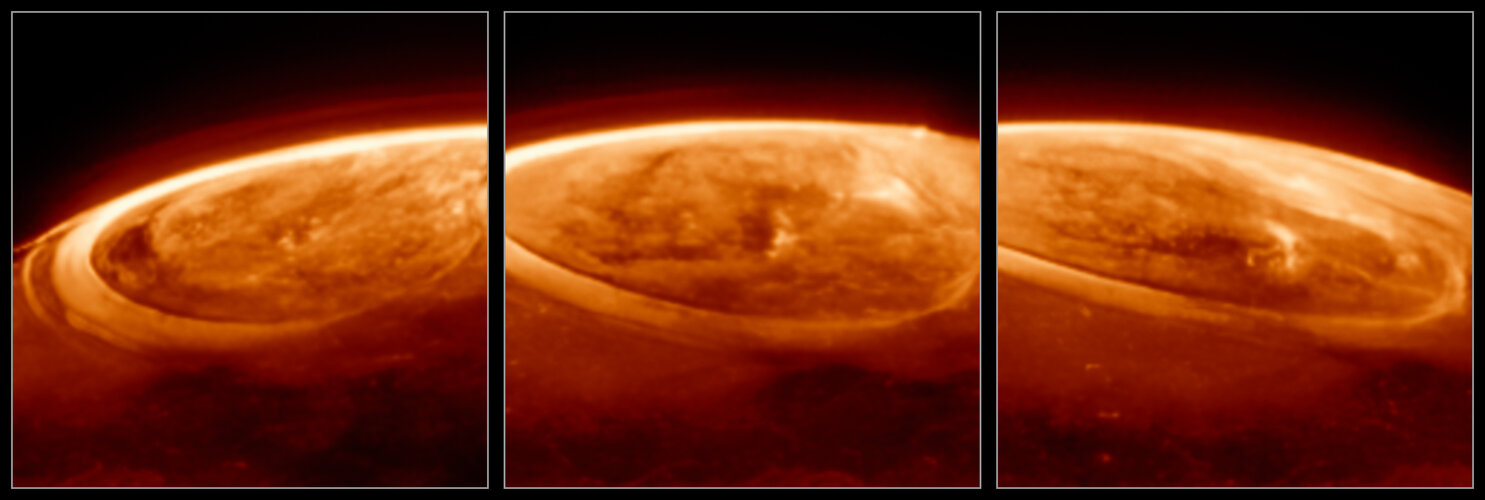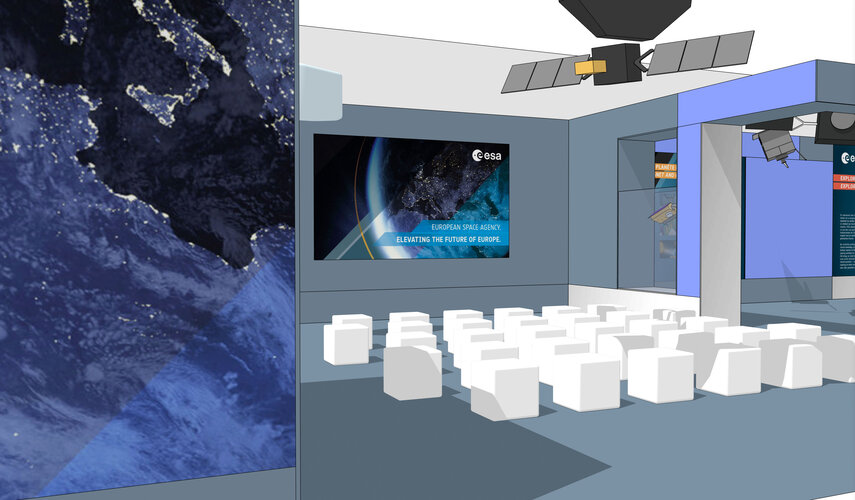Tough microbes found in NASA cleanrooms hold clues to space survival and biotech
Monday, 12 May 2025 19:24This request seems a bit unusual, so we need to confirm that you're human. Please press and hold the button until it turns completely green. Thank you for your cooperation!
Press and hold the button
If you believe this is an error, please contact our support team.
185.132.36.159 : b732a63a-9a79-4c94-b065-05d9bf3d
Space law doesn't protect historical sites, mining operations or moon bases—a lawyer describes a framework that could
Monday, 12 May 2025 13:58This request seems a bit unusual, so we need to confirm that you're human. Please press and hold the button until it turns completely green. Thank you for your cooperation!
Press and hold the button
If you believe this is an error, please contact our support team.
185.132.36.159 : a1534e74-7da3-441e-87c0-03230b6b
NASA's planned budget cuts could set back space science, but show how to future-proof the agency
Monday, 12 May 2025 13:29This request seems a bit unusual, so we need to confirm that you're human. Please press and hold the button until it turns completely green. Thank you for your cooperation!
Press and hold the button
If you believe this is an error, please contact our support team.
185.132.36.159 : 82246a69-e178-4965-bb9e-60230f56
Webb reveals new details and mysteries in Jupiter’s aurora
Monday, 12 May 2025 11:00
The NASA/ESA/CSA James Webb Space Telescope has captured new details of the auroras on our Solar System’s largest planet. The dancing lights observed on Jupiter are hundreds of times brighter than those seen on Earth. With Webb’s advanced sensitivity, astronomers have studied the phenomena to better understand Jupiter’s magnetosphere.
Simulating space on Earth for miniature satellite testing
Monday, 12 May 2025 08:00 Video:
00:00:33
Video:
00:00:33
Inside a spherical cagelike structure, a small platform slowly spins as if floating. A single, bright lamp illuminates the scene, simulating the Sun. This setup constitutes the European Space Agency’s brand new facility for the testing of CubeSats – small satellites, usually no larger than a shoebox and weighing only a few kilograms.
This space-simulating facility, built for ESA by University of Bologna and Nautilus - Navigation in Space, is part of the Attitude and Control System (AOCS) & Pointing Systems laboratory at ESTEC, the Agency’s technical centre.
Just like any piece of machinery destined for space, CubeSats undergo
Accelerating Mathematical Discovery with AI for Tomorrow's Breakthroughs
Monday, 12 May 2025 07:47 Math has long been the engine behind countless technological advancements, but the path to groundbreaking mathematical insights has traditionally been slow and labor-intensive, often taking years or even centuries to unfold. This delay limits the ability of mathematics to tackle urgent challenges in fields like national security, medicine, and advanced computing.
To overcome this bottlenec
Math has long been the engine behind countless technological advancements, but the path to groundbreaking mathematical insights has traditionally been slow and labor-intensive, often taking years or even centuries to unfold. This delay limits the ability of mathematics to tackle urgent challenges in fields like national security, medicine, and advanced computing.
To overcome this bottlenec What NASA Is Learning from the Biggest Geomagnetic Storm in 20 Years
Monday, 12 May 2025 07:47 One year ago today, representatives from NASA and about 30 other U.S. government agencies gathered for a special meeting to simulate and address a threat looming in space. The threat was not an asteroid or aliens, but our very own life-giving Sun.
The inaugural Space Weather Tabletop Exercise was supposed to be a training event, where experts could work through the real-time ramifications
One year ago today, representatives from NASA and about 30 other U.S. government agencies gathered for a special meeting to simulate and address a threat looming in space. The threat was not an asteroid or aliens, but our very own life-giving Sun.
The inaugural Space Weather Tabletop Exercise was supposed to be a training event, where experts could work through the real-time ramifications Back to light
Monday, 12 May 2025 06:10
As the night closed in on Spain and Portugal on 28 April, polar satellites followed the blackout that lasted well into the early hours of the morning in several regions.
Save the date: 16–22 June - ESA at the Paris Air Show
Monday, 12 May 2025 05:50
The European Space Agency will be present at the 55th edition of International Paris Air Show, taking place on 16-22 June at Le Bourget airport.
Soviet-era spacecraft plunges to Earth after 53 years stuck in orbit
Sunday, 11 May 2025 10:23This request seems a bit unusual, so we need to confirm that you're human. Please press and hold the button until it turns completely green. Thank you for your cooperation!
Press and hold the button
If you believe this is an error, please contact our support team.
185.132.36.159 : 1858e1d4-b2de-4dc4-9f7d-2cab3d7a
Rocket Lab Secures U.S. Air Force Contract for Neutron Re-Entry Mission
Sunday, 11 May 2025 09:12 Rocket Lab USA, Inc. (Nasdaq: RKLB) has announced that it will launch its new medium-lift reusable rocket, Neutron, for the U.S. Air Force Research Laboratory (AFRL) as part of a pioneering Rocket Cargo mission. This mission, set for no earlier than 2026, will serve as a critical step in developing rapid, point-to-point cargo transportation capabilities, aiming to bolster global defense logistic
Rocket Lab USA, Inc. (Nasdaq: RKLB) has announced that it will launch its new medium-lift reusable rocket, Neutron, for the U.S. Air Force Research Laboratory (AFRL) as part of a pioneering Rocket Cargo mission. This mission, set for no earlier than 2026, will serve as a critical step in developing rapid, point-to-point cargo transportation capabilities, aiming to bolster global defense logistic Martian Seismic Data Suggests Potential Liquid Water Reserves at Depth
Sunday, 11 May 2025 09:12 Liquid water, a critical component for the habitability of Mars, may still be present beneath its surface, according to a recent study conducted by an international team of geophysicists and geologists. The research, led by Dr. Weijia Sun from the Institute of Geology and Geophysics, Chinese Academy of Sciences, alongside Dr. Hrvoje Tkalcic of The Australian National University, Dr. Marco G. Mal
Liquid water, a critical component for the habitability of Mars, may still be present beneath its surface, according to a recent study conducted by an international team of geophysicists and geologists. The research, led by Dr. Weijia Sun from the Institute of Geology and Geophysics, Chinese Academy of Sciences, alongside Dr. Hrvoje Tkalcic of The Australian National University, Dr. Marco G. Mal Oracle-M Completes Successful Hot Fire Test for Cislunar Space Mission
Sunday, 11 May 2025 09:12 The United States Space Force (USSF) Space Systems Command (SSC) and the Air Force Research Laboratory (AFRL) have achieved a critical milestone in cislunar space situational awareness (SSA) with the successful completion of the Oracle-M (Oracle-Mobility) Hot Fire Test at Edwards Air Force Base, California. Conducted from March 16 to 21, 2025, this test represents a pivotal step in readying Orac
The United States Space Force (USSF) Space Systems Command (SSC) and the Air Force Research Laboratory (AFRL) have achieved a critical milestone in cislunar space situational awareness (SSA) with the successful completion of the Oracle-M (Oracle-Mobility) Hot Fire Test at Edwards Air Force Base, California. Conducted from March 16 to 21, 2025, this test represents a pivotal step in readying Orac Simpler Quantum Information Processing Achieved Using Photon Time Encoding
Sunday, 11 May 2025 09:12 A team of researchers from Griffith University has introduced a new technique that significantly simplifies the use of high-dimensional quantum information encoded in light, potentially advancing next-generation quantum technologies.
This breakthrough, detailed in the journal Physical Review Letters, leverages a quantum effect known as Hong-Ou-Mandel (HOM) interference to streamline the de
A team of researchers from Griffith University has introduced a new technique that significantly simplifies the use of high-dimensional quantum information encoded in light, potentially advancing next-generation quantum technologies.
This breakthrough, detailed in the journal Physical Review Letters, leverages a quantum effect known as Hong-Ou-Mandel (HOM) interference to streamline the de Plato nears final camera installation for exoplanet hunt
Sunday, 11 May 2025 09:12 The assembly of the European Space Agency's (ESA) Plato mission is making significant strides, with 24 of the 26 planned cameras now integrated into the spacecraft. Once operational in space, Plato will utilize this extensive array of cameras to survey a vast portion of the sky in its search for terrestrial planets, aiming to uncover potentially habitable worlds.
Assembly work is progressi
The assembly of the European Space Agency's (ESA) Plato mission is making significant strides, with 24 of the 26 planned cameras now integrated into the spacecraft. Once operational in space, Plato will utilize this extensive array of cameras to survey a vast portion of the sky in its search for terrestrial planets, aiming to uncover potentially habitable worlds.
Assembly work is progressi 
